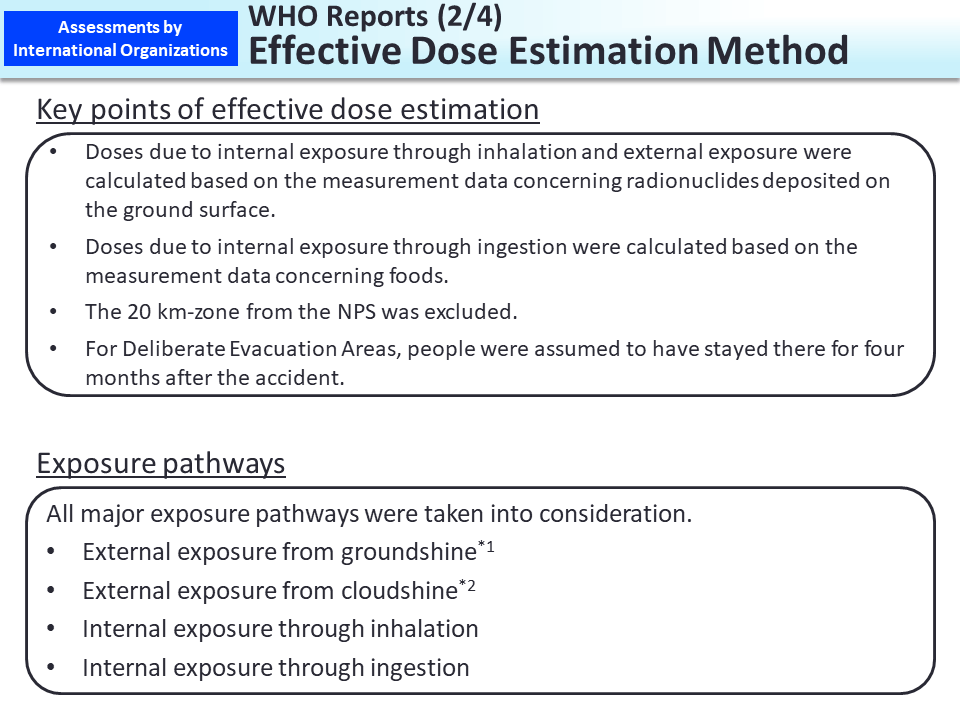WHO Reports (2/4)
Effective Dose Estimation Method
The key points of the WHO's effective dose estimation method are as follows.
- Doses due to internal exposure through inhalation and external exposure in Japan were calculated based on the data for measured concentrations of radionuclides deposited on the ground surface.
- Doses due to internal exposure through ingestion in Japan were calculated based on the data on measured concentrations of radionuclides in foods.
- For the 20 km-zone from Tokyo Electric Power Company (TEPCO)'s Fukushima Daiichi NPS, dose estimation was not conducted as people evacuated therefrom immediately after the accident.
- Regarding Namie Town, Iitate Village and Katsurao Village, which were designated as Deliberate Evacuation Areas, dose estimation was conducted assuming that people stayed in these areas for four months after the accident without taking into account evacuation or other measures actually taken.
The WHO assumed four exposure pathways, namely, external exposure from (i) groundshine*1 and from (ii) cloudshine,*2 and internal exposure through (iii) ingestion of foods and drinking water and through (iv) inhalation.
For external exposure, doses were estimated as 60% of those to be received when being outdoors all day long under the assumption that people stay indoors for 16 hours a day.
*1: Groundshine: External exposure from radionuclides deposited on the ground
*2: Cloudshine: External exposure from radionuclides in radioactive plumes (p.29 of Vol. 1, "Effects of Reactor Accidents")
[Relevant parts in the reports]
- WHO Report on preliminary dose estimation (prepared based on Figure 5 on page 25)
- WHO Report on health risk assessment, FAQ (Q.4)
- WHO Report on preliminary dose estimation, FAQ (latter half of Q.3)
- WHO Report on preliminary dose estimation (pages 38 and 86)
- Included in this reference material on March 31, 2015

